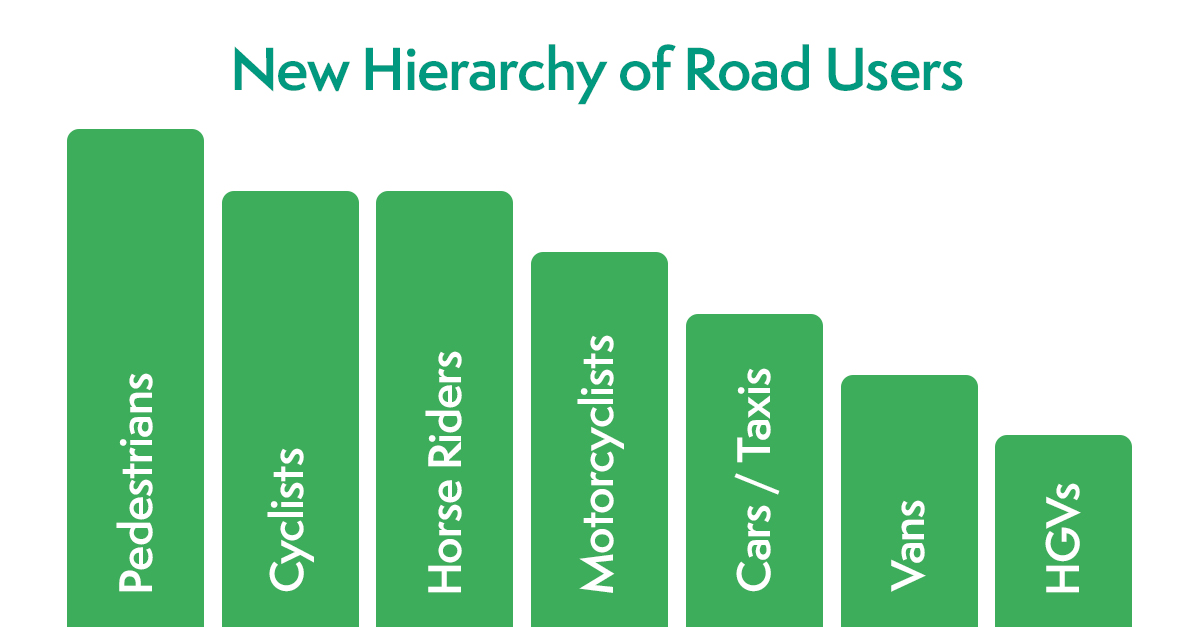New rules H1, H2 and H3 focus on giving more protection to smaller and more vulnerable road users such as pedestrians and cyclists.

Rule H1
This establishes that ‘Those in charge of vehicles that can cause the greatest harm in the event of a collision bear the greatest responsibility to take care and reduce the danger they pose to others.
‘This principle applies most strongly to drivers of large goods and passenger vehicles, vans/minibuses, cars/taxis and motorcycles.’
Rule H2
This states that ‘at a junction you should give way to pedestrians crossing or waiting to cross a road into which or from which you are turning.’
This means that if you are about to turn into a road and there’s a pedestrian waiting to cross the road, you should stop and give way to them. These rules apply to cyclists too.
Rule H3
Rule H3 says that ‘you should not cut across cyclists, horse riders or horse-drawn vehicles going ahead when you are turning into or out of a junction or changing direction or lane.’
This means that motorists should be patient and wait for a gap when cyclists are at a junction, moving alongside slow-moving traffic or when travelling around a roundabout.
Other changes…
Mobile phone restrictions will become tighter and more transparent. Any drivers who are caught texting whilst at the wheel will receive a £200 fine and six points on their licence.
Pavement parking restrictions are also expected to get stricter at some point in the near future across the UK with the Scottish government already enacting a bill to outlaw all parking on pavements from 2023.
There have also been some other smaller updates to the Highway Code. A technique called the ‘Dutch Reach’ has been added to the ‘Waiting and parking’ chapter. This technique involves opening your car door with the hand that’s furthest away. Doing this will force you to move your body around, making it easier for you to check over your shoulder when opening your door.
Reminders have also been added for electric vehicle owners to remember that their charging cables could be a trip hazard for pedestrians.








